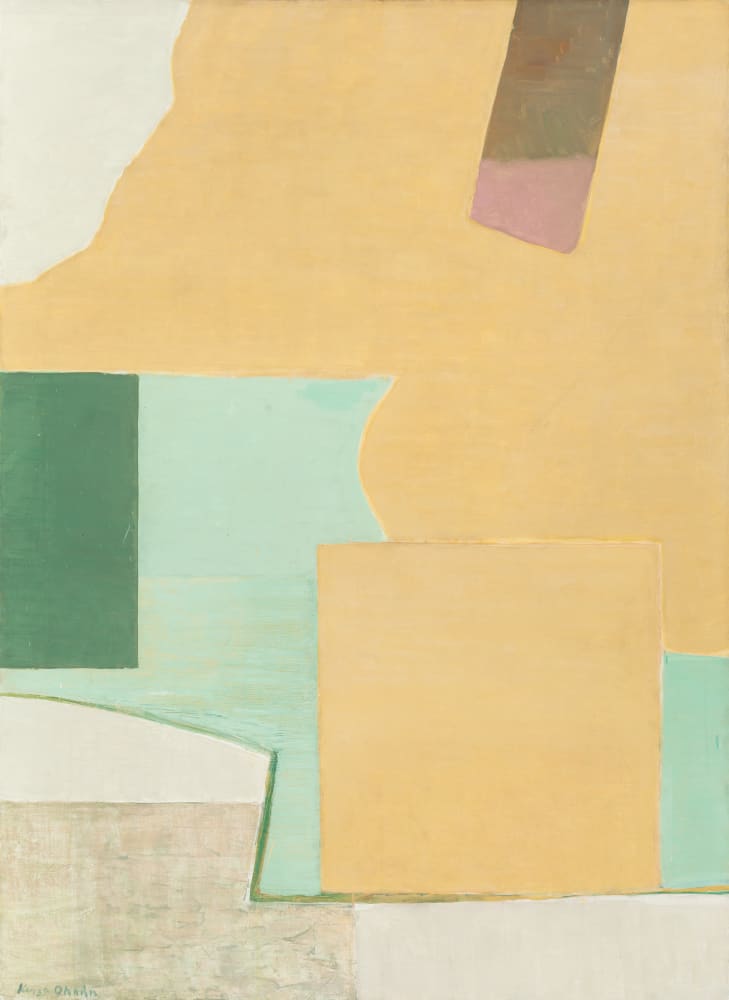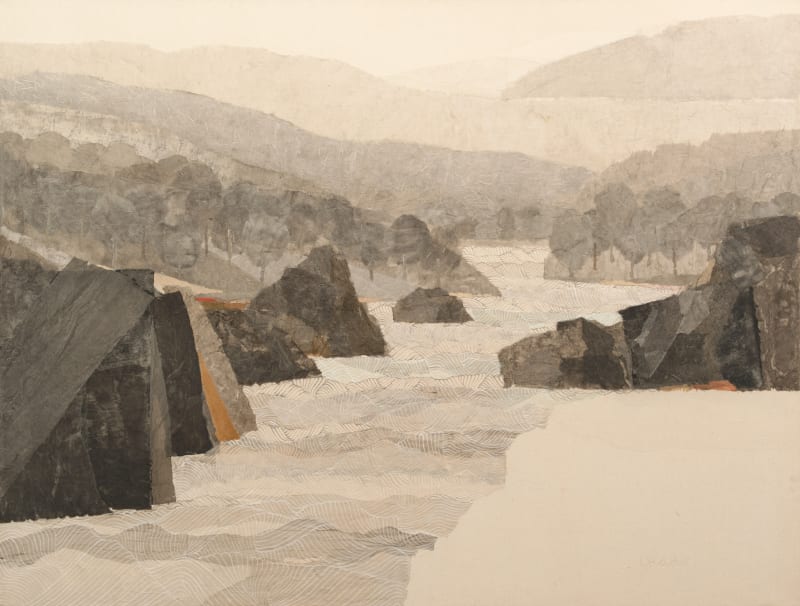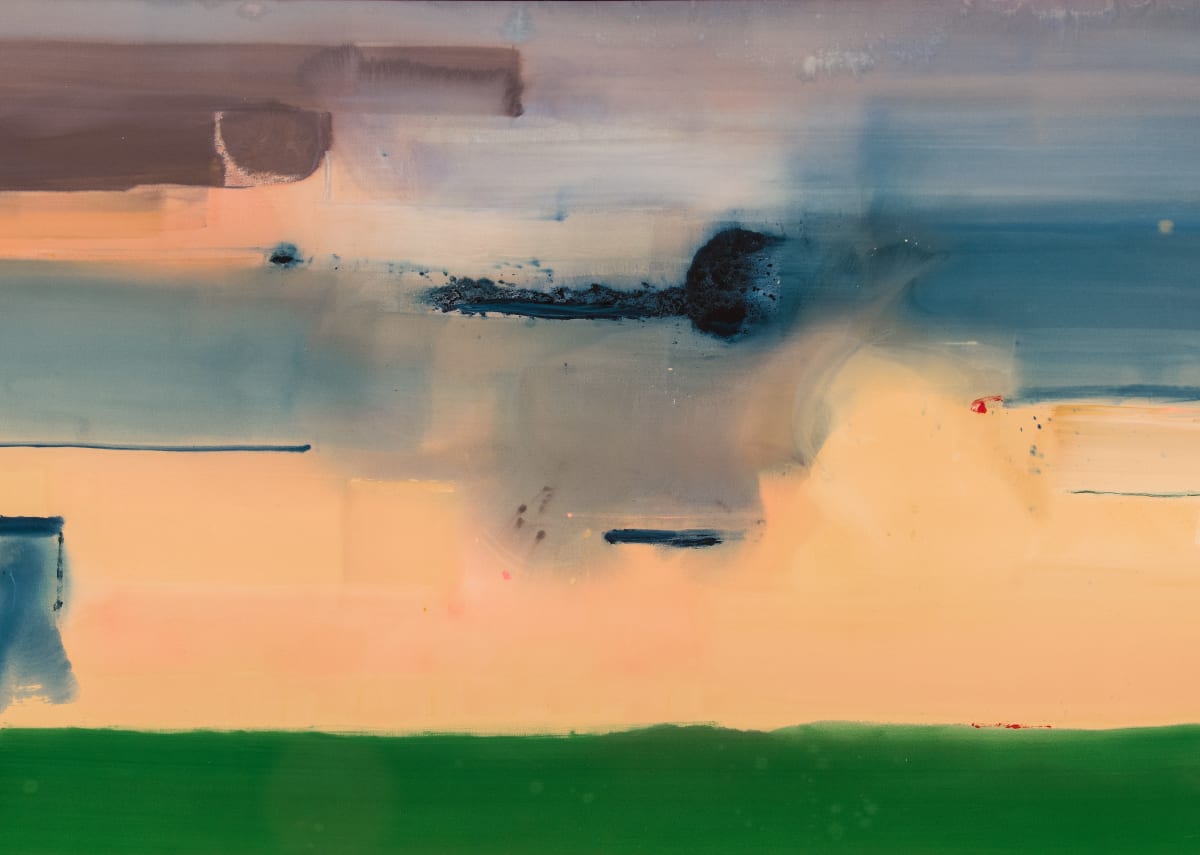
Nature also played a large role in his work, particularly in his subdued palettes.
Kenzo Okada was born in Yokohama, Japan in 1902. Raised in an affluent family, Okada pursued his passion for art despite the misgivings of his father, a successful industrialist, who encouraged him to follow a more practical career path. Against his father’s wishes, Okada enrolled at the Tokyo School of Fine Arts in 1922, at the age of 20, and then followed his fascination with Western art movements to Paris two years later, where he studied briefly with the Japanese artist Foujita Tsuguharu (aka Léonard Foujita). He exhibited in the 1927 Salon d’Automne, and returned to Japan that same year to great critical success. He had his first solo exhibition in 1929, at the Galerie Nichido in Tokyo, where he would continue to exhibit until 1935. Okada also taught while living in Japan at such prestigious institutions as School of Fine Arts, Nippon University; Musashino Art Institute, Tokyo; and the Tama Fine Arts College, Tokyo.
Kenzo Okada was born in Yokohama, Japan in 1902. Raised in an affluent family, Okada pursued his passion for art despite the misgivings of his father, a successful industrialist, who encouraged him to follow a more practical career path. Against his father's wishes, Okada enrolled at the Tokyo School of Fine Arts in 1922, at the age of 20, and then followed his fascination with Western art movements to Paris two years later, where he studied briefly with the Japanese artist Foujita Tsuguharu (aka Léonard Foujita). He exhibited in the 1927 Salon d'Automne, and returned to Japan that same year to great critical success. He had his first solo exhibition in 1929, at the Galerie Nichido in Tokyo, where he would continue to exhibit until 1935. Okada also taught while living in Japan at such prestigious institutions as School of Fine Arts, Nippon University; Musashino Art Institute, Tokyo; and the Tama Fine Arts College, Tokyo.
Okada continued to paint in the Western tradition for the next twenty years, painting both figurative works and Impressionistic landscapes. After World War II, however, he grew increasingly frustrated with the Japanese contemporary art world and moved to New York City in 1950. There, he quickly became enmeshed in the lively art scene, becoming friends and exchanging ideas with artists such as Mark Rothko and Clyfford Still, and other artists that now fall under the rubric of Abstract Expressionists. This physical move also coincided with an artistic move towards abstraction, and his connection to the Abstract Expressionists resulted in an interest in the subconscious, whose theories he used to explore his cultural heritage.
His Japanese heritage does, in fact, emerge in many of his postwar works, particularly influences of Zen Buddhism and the ancient No theater. Nature also played a large role in his work, particularly in his subdued palettes. Many critics attributed the resulting all over composition to the influence of color field artists such as Helen Frankenthaler and Jules Olitski, although he used actual natural materials, such as rocks and twigs, to help him visualize and build his compositions, not the pull of gravity and the absorption of pigment into the canvas.
Okada became a United States citizen in 1960. He received his first one-person show in New York City at the Betty Parsons Gallery in 1953, and would continue to show there throughout his life. Okada has also had solo exhibitions at: the Corcoran Gallery of Art, Washington D.C. (1955); Sao Paulo Biennial (as U.S. representative, 1955); Fairweather Hardin Gallery, Chicago (1961); and the Massachusetts Institute of Technology Museum, Cambridge (1963). He was the recipient many international awards: the Annual Art Prize from the Art Institute of Chicago (1954); the International Prize at the Pittsburgh International (now Carnegie International, 1955); the Astorre Meyer Prize at the Venice Biennale (1958); and the Art Prize from the Ford Foundation (1960). Okada also had a travelling retrospective at the Albright-Knox Gallery, Buffalo, New York (1965), and also at the Seibu Museum of Art, Tokyo and the Fukuoka Art Museum, Japan (1982). Okada died on July 25, 1982, in Tokyo.

















